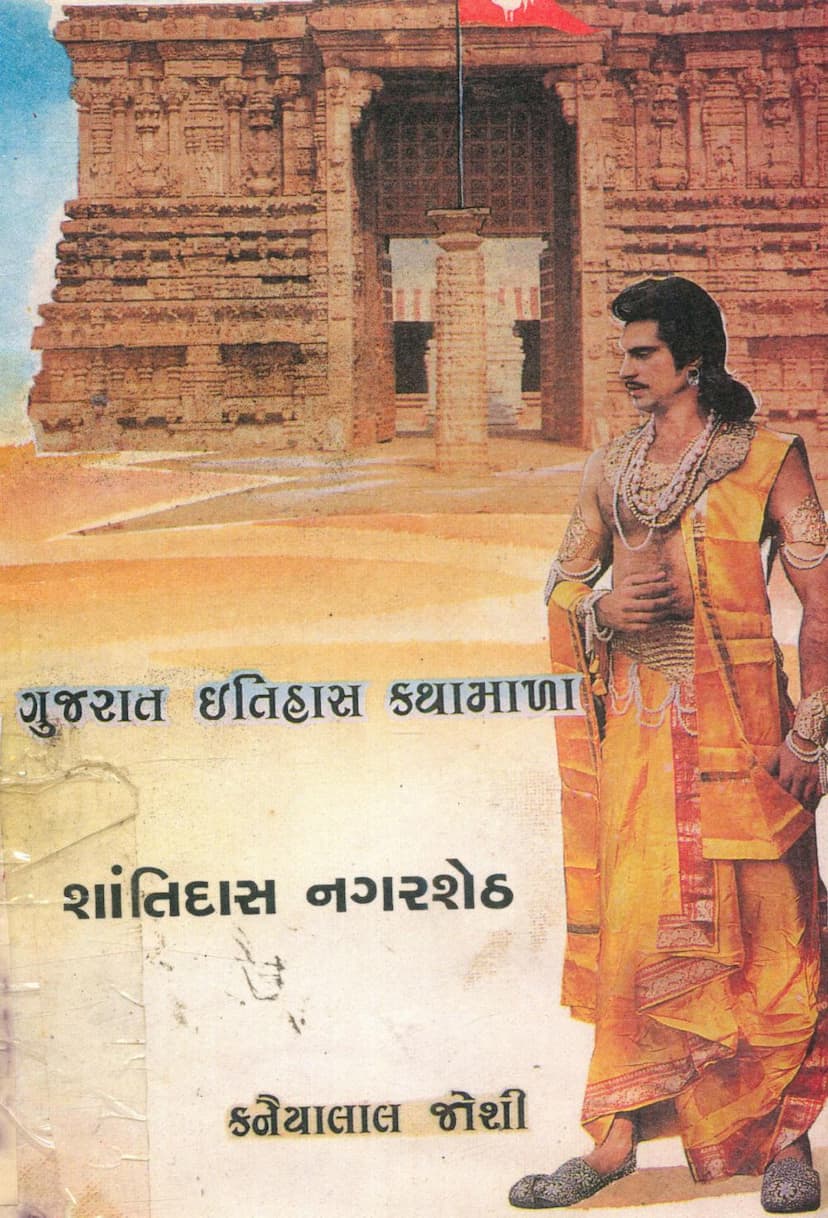Shantidas Nagarsheth
Added to library: September 2, 2025

Summary
This book, "Shantidas Nagarsheth," by Kanaiyalal Joshi, is part of the "Gujarat Itihas Kathamala" (Gujarat History Story Series). This series aims to introduce children to the glorious historical figures of Gujarat through engaging narratives. The book focuses on Shantidas Nagarsheth, highlighting his life and contributions.
The text begins by describing the historical significance of the land where Ahmedabad is situated, mentioning its ancient name "Shvabhra-desh" and the Sabarmati River. It touches upon the ashram of Sage Dadhichi and the ancient city of Ashaval. The establishment of Ahmedabad by Karnadev Solanki (named Karnavati) and its subsequent development under Sultan Ahmed Shah are detailed. The book explains the founding of the Bhadra fort and the Jama Masjid, and how Manekchowk became a bustling marketplace.
The narrative then transitions to the Mughal era. It recounts how Ahmedabad came under Mughal rule after the decline of the Sultanate. A significant part of the story focuses on a young Shantidas, who works in a Jain temple. He displays his honesty and integrity by returning a lost jeweled belt to a wealthy woman, Padmavati, the wife of Seth Tejendra. Impressed by his character, Seth Tejendra takes Shantidas under his wing, teaching him the jewelry business.
The story follows Shantidas's rise in the business world, demonstrating his sharp intellect and business acumen. He undertakes a perilous journey to deliver silver, cleverly evading bandits by disguising the silver as empty chests. This incident earns him great respect and trust from his mentor.
The book highlights Shantidas's loyalty and devotion to his mentor and his family. When Seth Tejendra decides to renounce worldly life and take up initiation, he transfers his entire wealth to Shantidas. Shantidas, in turn, demonstrates his filial piety by caring for Padmavati and fulfilling her wishes. He marries Mallika, a young woman chosen by Padmavati, and they live a life of prosperity and philanthropy.
The narrative then shifts to the reign of Emperor Jahangir. Shantidas plays a crucial role in advising Jahangir during his visit to Ahmedabad. When Jahangir is displeased with the city, Shantidas devises a plan to impress him and his consort, Nur Jahan, by organizing events and presenting magnificent jewelry. His cleverness is evident when he explains the Emperor's value as "one rati more" of destiny, earning his admiration. Shantidas's business skills are further showcased when he loans vast sums of money to Jahangir, demonstrating his immense wealth and influence.
The book also includes the story of Pan Kunwar, a renowned dancer, who, after facing disrespect from the Kotwal Sarang Malik, seeks refuge and assistance from Shantidas. She entrusts him with her wealth for charitable purposes, which Shantidas uses to build temples, including the famous Chintamani temple.
The final chapters touch upon the legacy of Shantidas and his descendants. It mentions their continued prominence as Nagarsheths in Ahmedabad, their significant contributions to the city's development, and their patronage of education and public welfare. The book concludes by emphasizing that while empires may crumble, names built on good deeds and character endure through time.